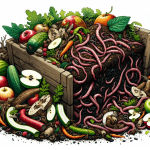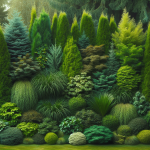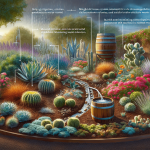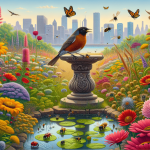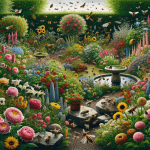This post may contain affiliate links. As an Amazon Associate, we may earn commissions from qualifying purchases.
Have you ever pondered how to create a garden that not only looks beautiful but also keeps your beloved pets safe? Or maybe you’ve been daydreaming about transforming your outdoor space into a haven for both humans and animals? If so, you’re in the right place. Designing a garden that accommodates our furry friends while ensuring their safety can seem like a tricky task. But fear not, for there are simple and effective ways to achieve this!
Gardening with pets requires a delicate balance of aesthetics and practicality. You’ll want a space where your four-legged pals can romp and play without you constantly worrying about hazards. In this article, we’ll explore various aspects of designing a pet-friendly and safe garden. Let’s embark on this journey together.
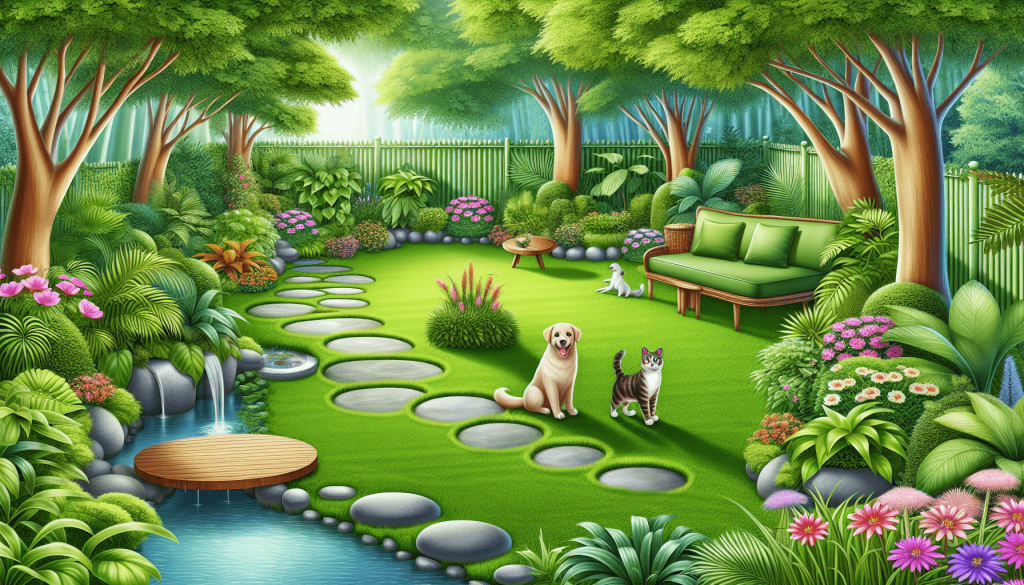
Understanding Your Pet’s Need
Before you can design a space that’s perfect for both you and your pet, it’s vital to understand their needs. Each pet is unique and may have certain habits or characteristics that will influence your garden design.
Knowing Your Pet’s Behavior
Consider how your pet behaves in different environments. Do they love to dig, or are they serial plant munchers? Understanding their tendencies can guide your plant and material choices. Digging is a common behavior in many dogs, so you’ll need to plan for that if it describes your furry friend.
Considering Your Pet’s Size and Agility
The size and agility of your pet will also influence your design. Larger pets may require more robust fencing, while more agile pets might need taller boundaries to prevent escape. Conversely, smaller pets might need steps or ramps to navigate certain areas of the garden comfortably.
Choosing Safe and Durable Materials
The materials you select in your garden play a significant role in ensuring it’s safe for your pets. From pathways to fences, each choice affects their safety and comfort.
Pathways: Smooth and Safe
Imagine your pet dashing excitedly across the garden. The surfaces they walk on should be smooth to avoid any potential injury. While you might be tempted by those decorative pebbles or stones, they could be a slip hazard or uncomfortable for bare paws. Instead, opt for materials like natural flagstones or plain concrete, which provide a smoother surface.
Pet-Safe Fencing
Fencing is a crucial element of a pet-friendly garden. It should be high enough to prevent your pet from jumping over and deep enough, if possible, to prevent any digging attempts from succeeding. Additionally, choose non-toxic materials as pets may chew on fences occasionally.
Selecting Pet-Friendly Plants
The allure of lush greenery is undeniable, but not all plants are created equal in a pet-friendly garden. Some common garden plants can be toxic to pets when ingested.
Plants to Avoid
While various plants add charm and beauty to your garden, some pose a risk to your furry companions. Here’s a table to help you navigate plant selection:
| Toxic Plant | Symptoms of Ingestion |
|---|---|
| Azaleas | Vomiting, diarrhea, drooling |
| Daffodils | Vomiting, lethargy |
| Tulips | Oral irritation, drooling |
| Lily of the Valley | Heart problems, vomiting |
It’s best to avoid these entirely or minimize their use in your garden, especially in accessible areas.
Safe Plant Alternatives
Thankfully, plenty of plants are safe for pets. Consider incorporating:
- Camellia: These lush shrubs are non-toxic and offer beautiful blooms.
- Sunflowers: Their cheerful faces bring joy without any risk to your pet.
- Rosemary and Basil: These herbs are great for cooking and won’t harm your pet if nibbled on.
Creating Pet-Safe Outdoor Furniture
Pet-safe furniture doesn’t only mean durable; it also means choosing furniture that won’t harm your pet even if they’re a little too playful around it.
Durable and Non-Toxic Materials
Choose furniture made from durable, non-toxic materials. Avoid very sharp edges and opt for pieces that can withstand a bit of rough-and-tumble. Weather-resistant options are not only good for facing the elements but also durable enough to stand up to your pet’s curiosity.
Comfortable Spaces
Remember, your pet might also want a place to relax. Provide a shaded spot with some comfortable furniture where they can nap or watch the world go by. You might even consider a pet-specific outdoor bed.
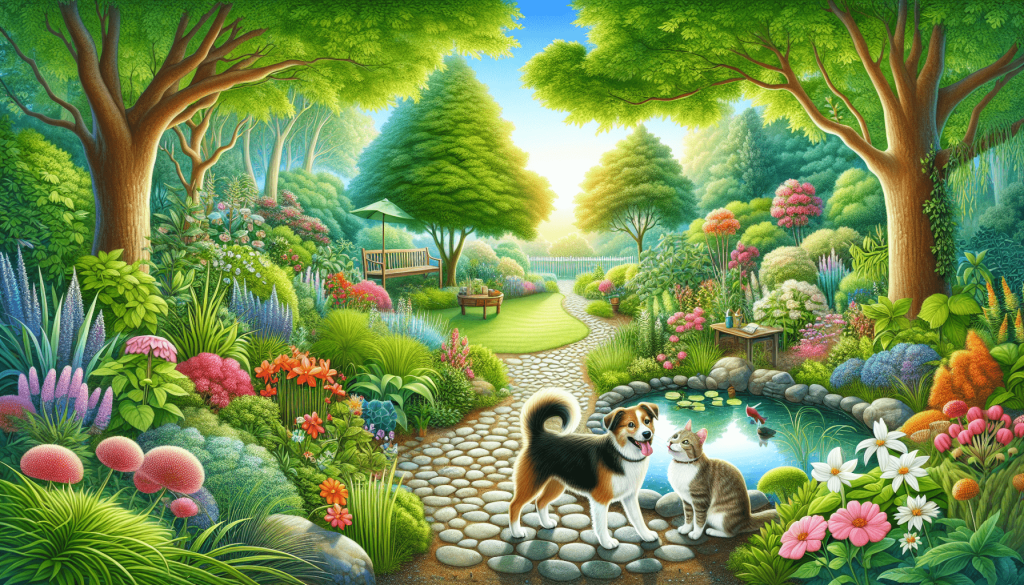
Water Features: Beauty with Safety
Water features like ponds or fountains add tranquility to a garden, but they should be designed with your pet’s safety in mind.
Safe Pond Design
If you’re considering a pond, ensure it has sloped sides, so your pet can easily climb out if they accidentally fall in. You might even install a pond cover for additional safety. Avoid using chemicals that could harm your pet if they decide to take a sip.
Drinking Fountains for Pets
Providing fresh water is crucial, especially during hot days. A pet-friendly fountain can be both an aesthetic delight and a functional addition. Make sure it’s easy for them to access and made of pet-safe materials.
Providing Shade and Shelter
Like us, our pets enjoy relaxing in a shady spot on a warm day. Incorporating shaded areas into your garden is essential for their comfort and protection against the sun.
Natural Shade
Trees or large shrubs can act as natural shade providers. Just be sure that they’re not on the list of toxic plants.
Man-made Shelters
Creating sheltered areas with pergolas or small garden tents can offer additional protection and a cozy corner for your pet. Ensure proper ventilation and that the structure is stable and safe.
Designing Play Areas
Your garden can double as a playground that’ll help keep your pet both entertained and exercised.
Space to Run and Explore
Ensure there’s ample room for your pet to stretch their legs. A large open area not only gives them space to run but can reduce the likelihood of them venturing where they shouldn’t.
Interactive Toys and Structures
Consider adding interactive elements like tunnels, weaving poles, or even a DIY agility course to keep your pet engaged. These features can create a stimulating environment that caters to their instinctual behaviors.
Implementing Safe Pest Control
Pests can be a nuisance, but using conventional control methods might not be safe for pets.
Natural Pest Control
Opt for pet-safe alternatives like neem oil for plant insect infestations or diatomaceous earth for crawling insects. These methods are effective without posing a risk to your furry friends.
Avoiding Harmful Chemicals
Read labels thoroughly and avoid products with high toxicity. There are natural, pet-friendly products that are just as effective without the harmful side effects.
Ensuring Seasonal Safety
Different seasons bring different challenges to maintaining a pet-friendly garden.
Summer Months
Ensure there’s always a source of fresh water and plenty of shade to prevent overheating. During very warm days, you might want to limit the time your pet spends outdoors.
Winter Considerations
In winter, ensure that paths are free of ice where your pets walk. Consider pet-safe salt alternatives for de-icing to avoid harmful ingestion.
Constant Monitoring and Adaptation
A garden is a living and evolving space, and so is the life of your pet.
Regular Checks
Perform routine checks of your garden for any new hazards, such as branches that have fallen after a storm or newly exposed sharp edges.
Adjustments for Aging Pets
As your pet ages, they might need ramps or softer paths. Stay attentive to their changing needs, and adjust your garden accordingly.
By being mindful of these aspects, you can create a garden that is not just a safe space, but a real sanctuary for both you and your pets. Enjoy the process, and remember that a bit of creativity goes a long way!



